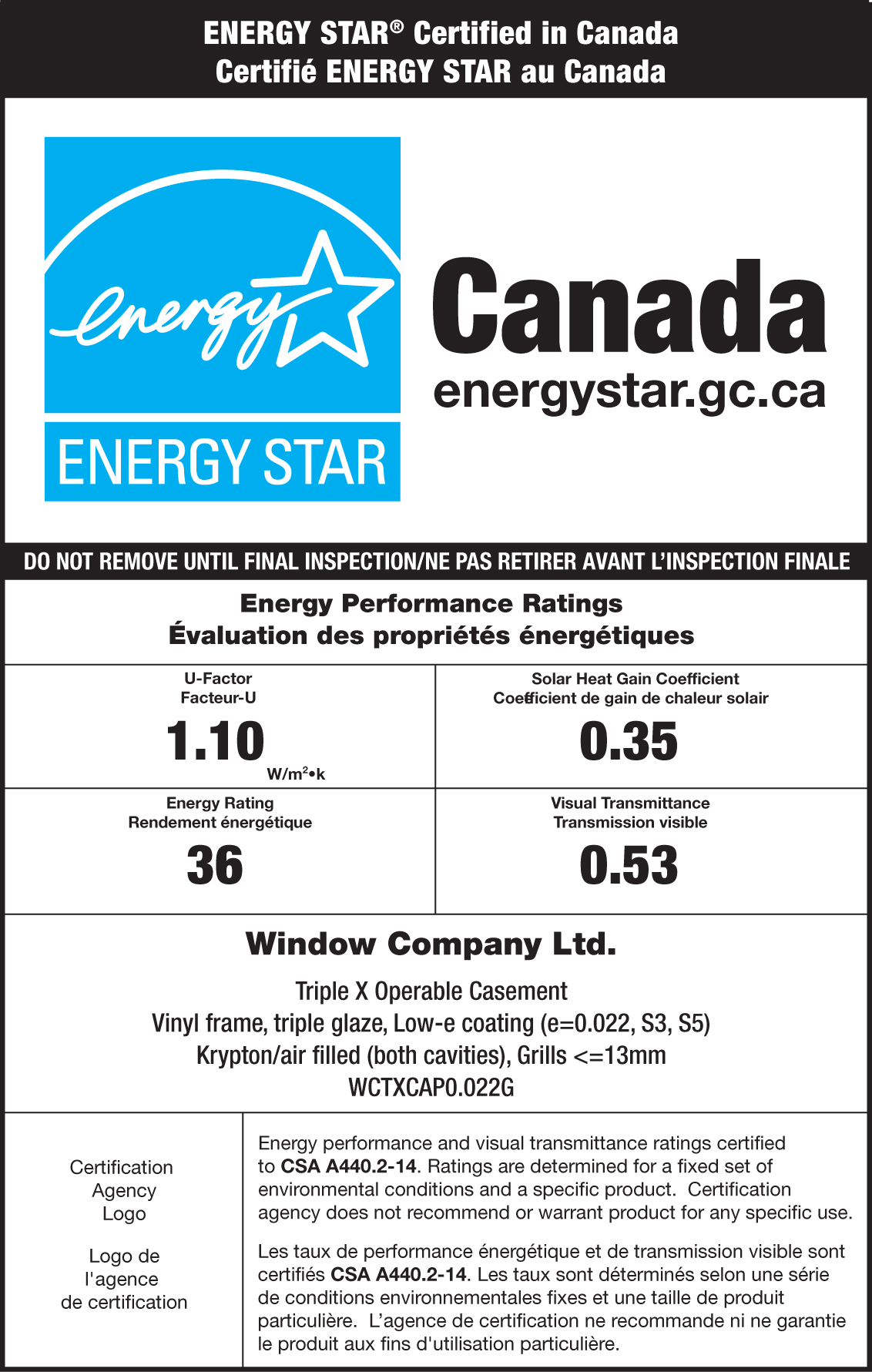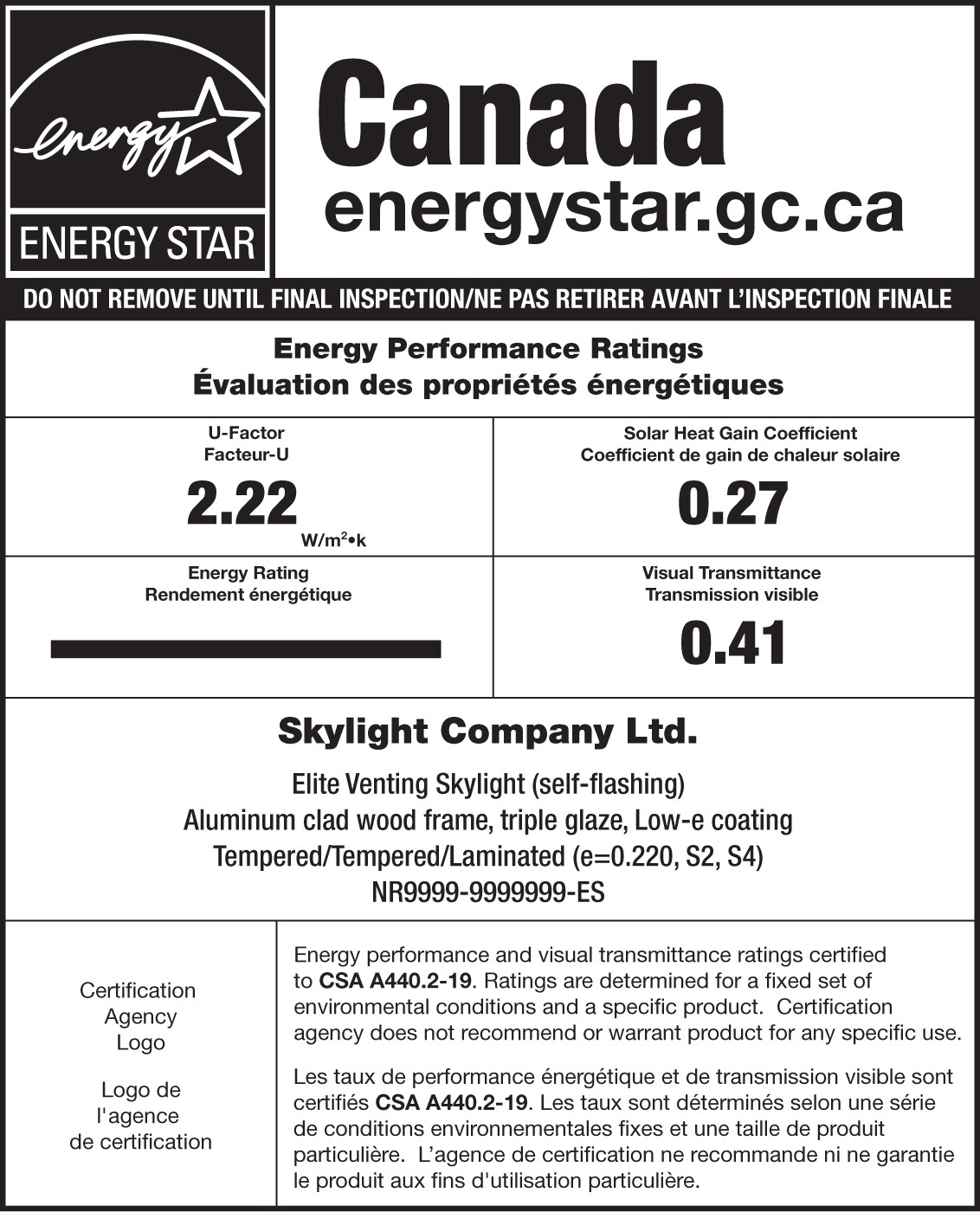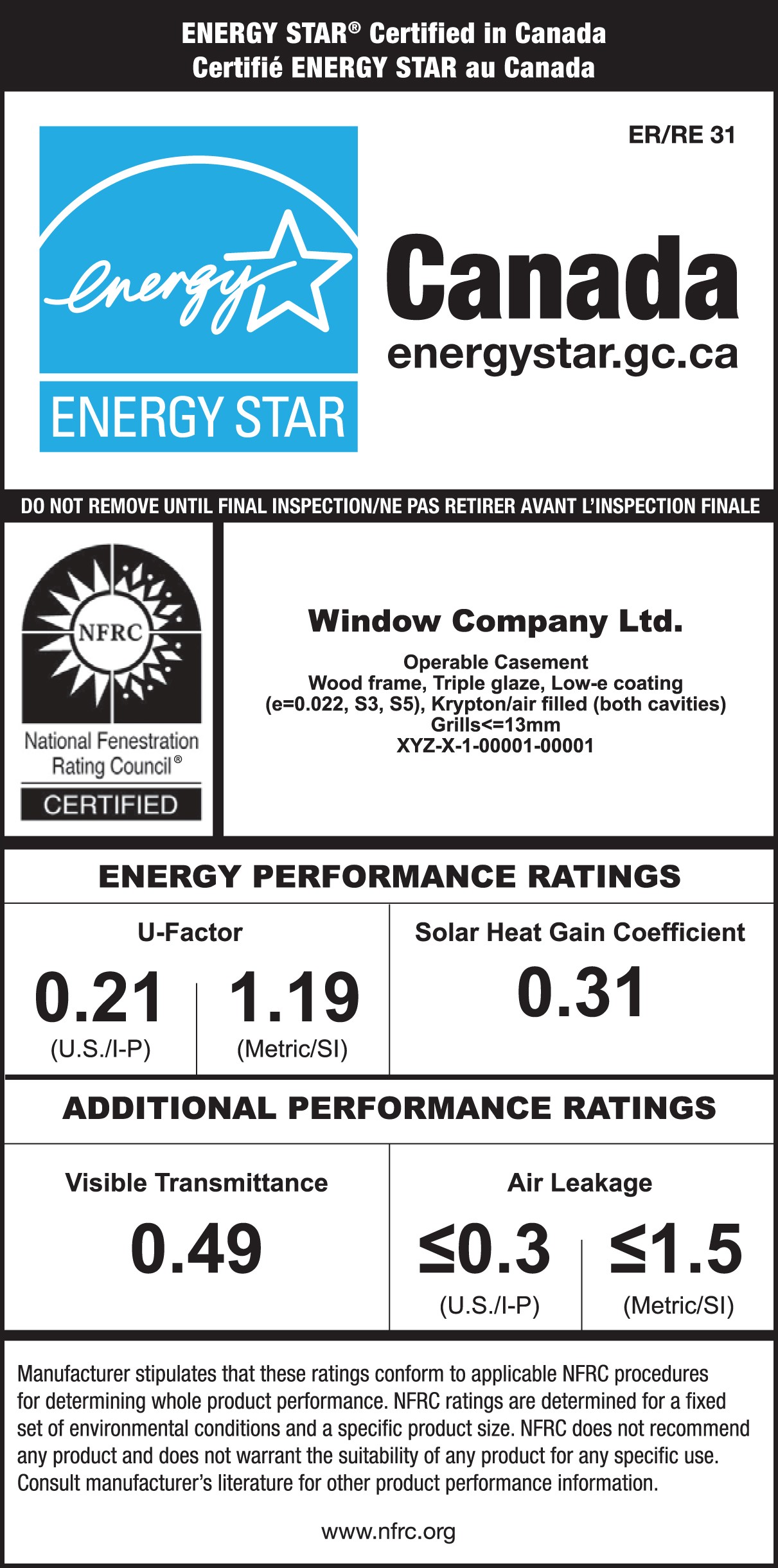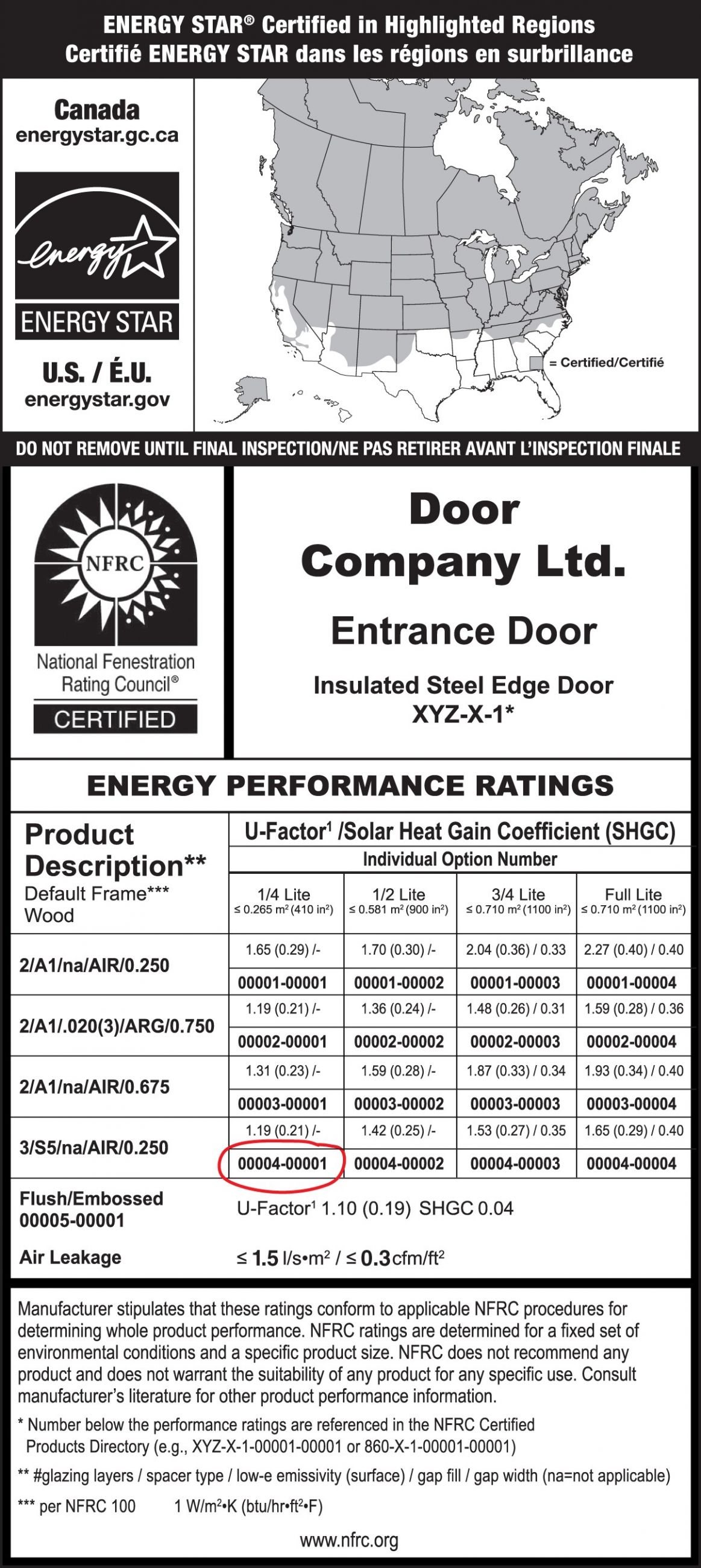2024 labelling requirements for ENERGY STAR fenestration
.png)
Requirements for the Labelling and Promotion of ENERGY STAR® Certified Fenestration Products Sold in Canada
May 2024
These requirements provide detailed information on how to label ENERGY STAR certified windows, doors and skylights sold in Canada. Please ensure that those responsible for labelling have read and understood these guidelines. Manufacturers are encouraged to share this document with agencies, manufacturing facilities, marketing departments, and graphic designers. Please contact ENERGY STAR (energystar@nrcan-rncan.gc.ca) with any questions.
All electronic files referred to in these guidelines are located on the ENERGY STAR Canada Participant’s website.
Contents
- Registration of the ENERGY STAR name and symbol in Canada
- The United States and ENERGY STAR certified products
- Labelling
- General requirements
- Colours
- Labeling the correct model
- Products with mullions (composite units and combination assembly products)
- Labeling for structural performance
- Private labeling
- Custom labels
- Spine labels
- Models certified Canadian certification bodies
- Models certified by the U.S. National Fenestration Rating Council (NFRC)
- General requirements
1. Registration of the ENERGY STAR name and symbol in Canada
The U.S. Environmental Protection Agency (EPA) has officially registered the ENERGY STAR name and symbol in Canada with the Canadian Intellectual Property Office. Natural Resources Canada (NRCan) is responsible for promoting and monitoring the use of the ENERGY STAR name and symbol in Canada.
To use the ENERGY STAR name and symbol in Canada, a Participant Administrative Arrangement with NRCan must be signed. Misuse of the name and symbol may result in the termination of the Participant Arrangement and reporting the misuse to the U.S. EPA.
2. The United States and ENERGY STAR certified products
Organizations intending to sell or promote products as ENERGY STAR certified in the U.S. must be registered as a U.S. EPA ENERGY STAR Partner and comply with U.S. guidelines.
The U.S. technical specifications for windows, doors and skylights are not the same as those in Canada. For information on the ENERGY STAR window and door program in the U.S., visit www.energystar.gov.
Note: The U.S. Customs and Border Protection may seize products exported to the U.S. if the ENERGY STAR symbol is not displayed according to U.S. EPA guidelines.
3. Labelling
-
a. General requirements
These labelling instructions are applicable to the Canadian ENERGY STAR technical specification for fenestration Version 5.0.
Colours
The information provided below is intended to ensure that Participants use the correct colours when reproducing or customizing a label template:
Two-colour process: 100C 100K
Greyscale: 100K 35K
Black: 100K
Pattern: 100KLabelling the correct model
Each Participant is provided with an Energy Efficiency Reporting Form that shows models registered with NRCan. The form also lists which of the registered models are ENERGY STAR certified in Canada.Products with mullions (composite units and combination assembly products)
A composite or combination fenestration product is comprised of two or more individual units mulled or attached together and intended for installation in one rough opening. When labelling these products for energy performance, it is permissible to have only one ENERGY STAR Fenestration Label and one Energy Performance Temporary Label on each unique operator type. For example, if a mulled product has two operable casements and two fixed casements, then only one of the operable casements and one of the fixed casements needs to be labelled.Labelling for structural performance
ENERGY STAR in Canada does not require certified structural performance results. If a product is certified for structural performance by an independent third party, the manufacturer should consult the CB for structural performance labelling requirements. In addition, manufacturers should consult provincial or local code authorities to determine structural performance labelling expectations and requirements for the location in which the products are installed.
Private labelling
Private labelling occurs when a manufacturer makes and distributes products under a brand name other than the manufacturer’s name. Privately labelled models must be registered with NRCan under the brand name. Manufacturers are allowed to use private label brand names on their labels according to the requirements of their CB and the requirements detailed in this document.Custom labels
If a manufacturer Participant is unable to use the label templates, custom labelling is allowed only upon NRCan approval.To obtain approval of a proposed custom label, send mock-ups to fenestration@nrcan-rncan.gc.ca and allow two to four weeks for review.
Spine labels
An ENERGY STAR certification mark may be used on the spine of a product or its packaging. This may be necessary when the edge of the product is visible in a store display area and it is difficult or dangerous for the purchaser to see labels by pulling the product out of the display or rack.b. Models certified by Canadian certification bodies
Manufacturers are required to apply a removable temporary label and a permanent mark or label to the product. The temporary label must be used for one model only. Multiple model or “matrix” temporary labels are not permissible.
The temporary label must have the following:
- ENERGY STAR certification mark
- “Do Not Remove” notification text
- performance values (U-factor, SHGC, ER, VT)
- manufacturer’s or private labeller’s (brand) name
- model’s frame type (example: vinyl clad wood)
- model’s operator type (example: double horizontal slider)
- model’s glazing description including:
- the number of layers of glazing (example: triple glaze)
- if applicable, the gas fill and the number of cavities filled for units with more than one cavity (example: argon/air filled–both cavities)
- if applicable, the low-e coating and the surface number(s) to which it is applied (example: low-e coating e=0.022, S3, S5)
- if applicable, the generic height of the internal grills
- model’s unique model code or NRCan Reference Number
- the test standard to which the model was certified (example: CSA A440.2-19)
- testing and warranty disclaimer text
The CB’s certification mark may also appear on the temporary label.NRCan provides templates for the temporary label. The permanent mark or label is provided by the CB and the design and content must meet the CB’s requirements.
Example of temporary labels
.jpg)
Minimum Size 7.5 cm X 7.0 cm

Minimum Size 7.5 cm X 12.0 cm

Minimum Size 7.5 cm X 9.5 cm
c. Models certified by the U.S. National Fenestration Rating Council (NFRC)
Manufacturers are required to follow current NFRC labelling requirements as found in NFRC 700, which can be obtained directly from NFRC.
In addition, the following requirements must also be met:
- The U-factor and any air leakage values must be shown in metric units in addition to the inch-pound (I/P) units.
- The Canadian Energy Rating (ER) must be placed in the ENERGY STAR portion of the label on a certified window, sliding glass door or skylight. The ER is not required on a hinged door or sidelite label.
- The text “Do not remove until final inspection / Ne pas retirer avant l’inspection finale” must appear on the label.
NRCan only provides the ENERGY STAR section as a template to add to the NFRC label.Example of temporary labels

ENERGY STAR Section Only
Minimum Size 7.5 cm X 5.0 cm
ENERGY STAR Section Only
Minimum Size 7.5 cm X 5.0 cm
The ENERGY STAR name and symbol are trademarks registered in Canada by the United States Environmental Protection Agency and are administered and promoted by Natural Resources Canada.
Page details
- Date modified: